How To Soften Cream Cheese Quickly
Forgot to take out the cream cheese in time to get it to room temperature? Not to worry! This hack on how to soften cream cheese quickly is a lifesaver for any creamy recipe!
GET THAT SOFT CREAM CHEESE- QUICK!
Ever needed softened cream cheese for a recipe and your heart drops to your stomach when you realize you forgot to grab it from the fridge a few hours ago so it could soften on its own? Well, panic no more friends, I am going to show you all the ways you can soften cream cheese: from the traditional way to a quicker trick!
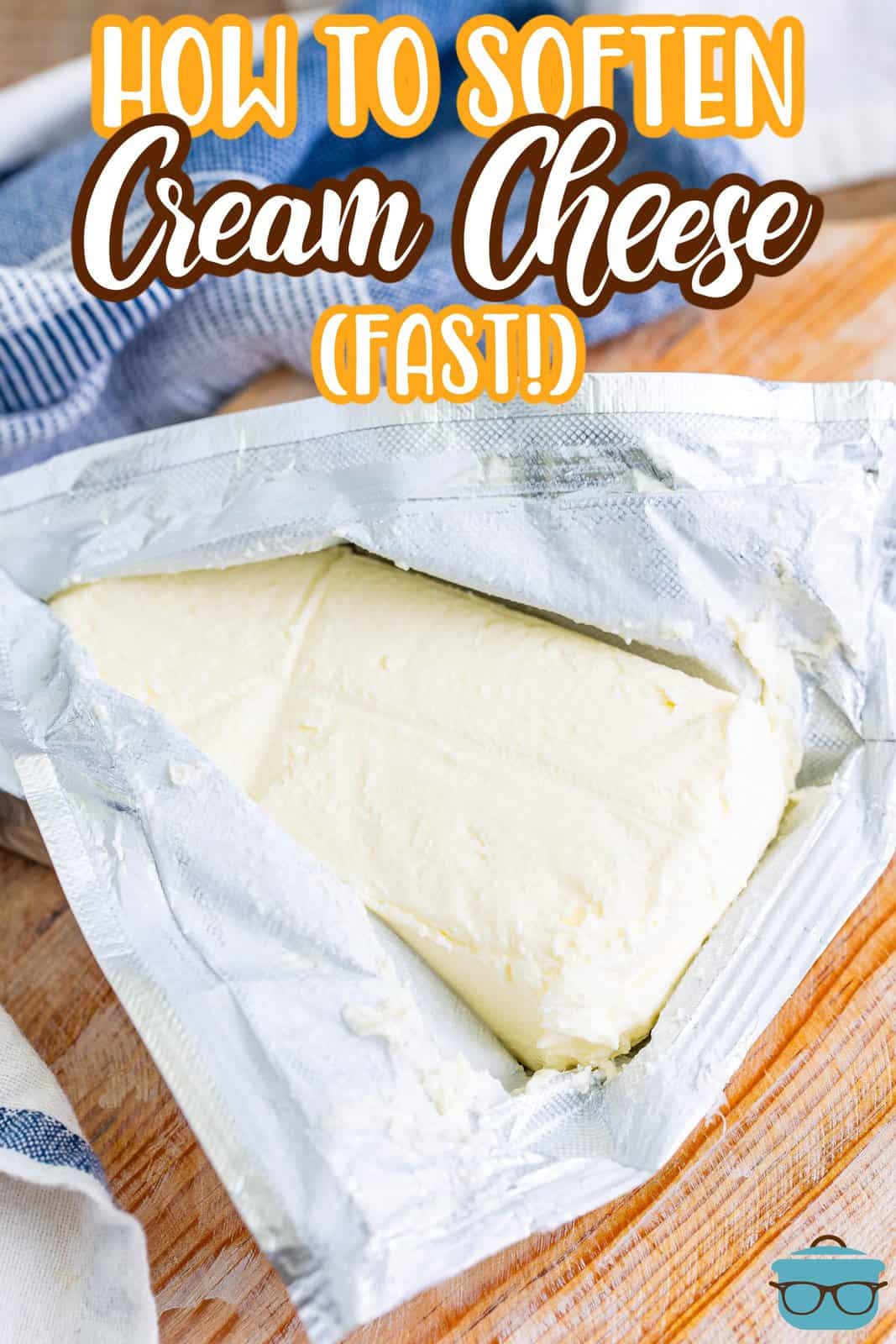
FREQUENTLY ASKED QUESTIONS (FAQ’S)
This is totally up to personal preference and budget. I think I have tried just about every cream cheese brand out there, including store brands, and they all taste good and work out just fine in whatever recipe I’m working on. Name brand is not necessary and it doesn’t (in my opinion) work or taste any better than others.
Technically cream cheese should not be left out on the counter to soften for more than two to three hours. If your home is exceptionally warm inside, it could be less. After that time, it is recommended to refrigerate it again for safety and quality.
Cream cheese can last in the fridge for quite a while, as long as it is stored properly. Generally, an unopened package of cream cheese can last in the refrigerator for about two to four weeks past the “sell-by” date printed on the packaging.
Once opened, it is recommended to use the cream cheese within seven to ten days for optimal freshness. To ensure that it lasts as long as possible, it is important to keep the cream cheese tightly sealed in its original packaging or transfer it to an airtight container or ziploc bag.
You should also store it in the coldest part of the refrigerator, usually the back of the bottom shelf. Proper storage will help maintain its quality and prevent it from absorbing any strong odors in the fridge. If you notice any mold or an off smell, it is best to discard the cream cheese.
So, make sure to check the expiration date, store it correctly, and enjoy your cream cheese for as long as it remains fresh.
Check the expiration date on the packaging. If the cream cheese is way past its expiration date, it’s a good indication that it may no longer be as fresh. Next, take a look at the appearance and texture of the cream cheese. If you notice any mold growth, discoloration, or an off-putting smell, these are all signs that the cream cheese has spoiled.
In terms of texture, if the cream cheese becomes slimy, watery, or grainy, it’s best to discard it. Trust your instinct and if anything seems off, it’s better to be safe than sorry. Food safety is important and no one wants food poisoning. When in doubt, throw it out.
Of the 3 methods I share in this post, using the microwave or a water bath are the two fastest methods. But, personally, I think the microwave method should be a last resort simply because, if you aren’t careful, you can easily melt the cream cheese instead of just softening it.
For many recipes, the instructions will state to soften the cream cheese to room temperature. That means the cream cheese is no longer stiff from being refrigerated. You can tell by touching it, if it is ready, your finger will give way easily without effort. Obviously, check with clean fingers.
It’s very important that you follow this instruction to soften properly or else the recipe may not turn out as expected. For example, the cream cheese may end up lumpy and no matter how long you mix it, you’ll just never get out the lumps. However, you don’t want it too soft or close to melting or it won’t set up properly in the recipe and it will compromise the end result. 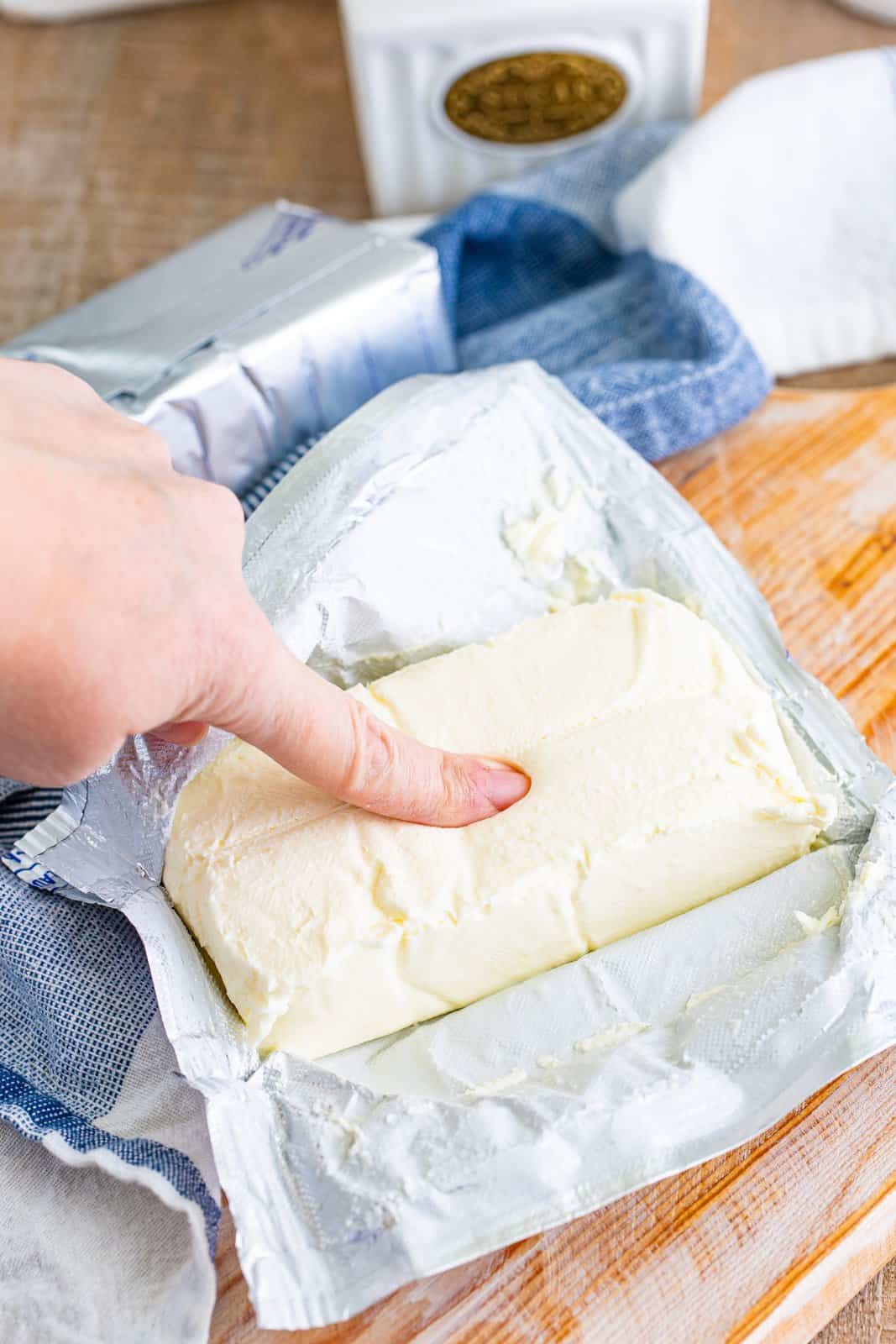
You can give it a little longer using whatever method you chose. If it seems close to being softened, try whipping it with an electric hand mixer or in a stand mixer, it should help it to soften fully by breaking it up. If the cream cheese is even the littlest bit cold though, this will not work. 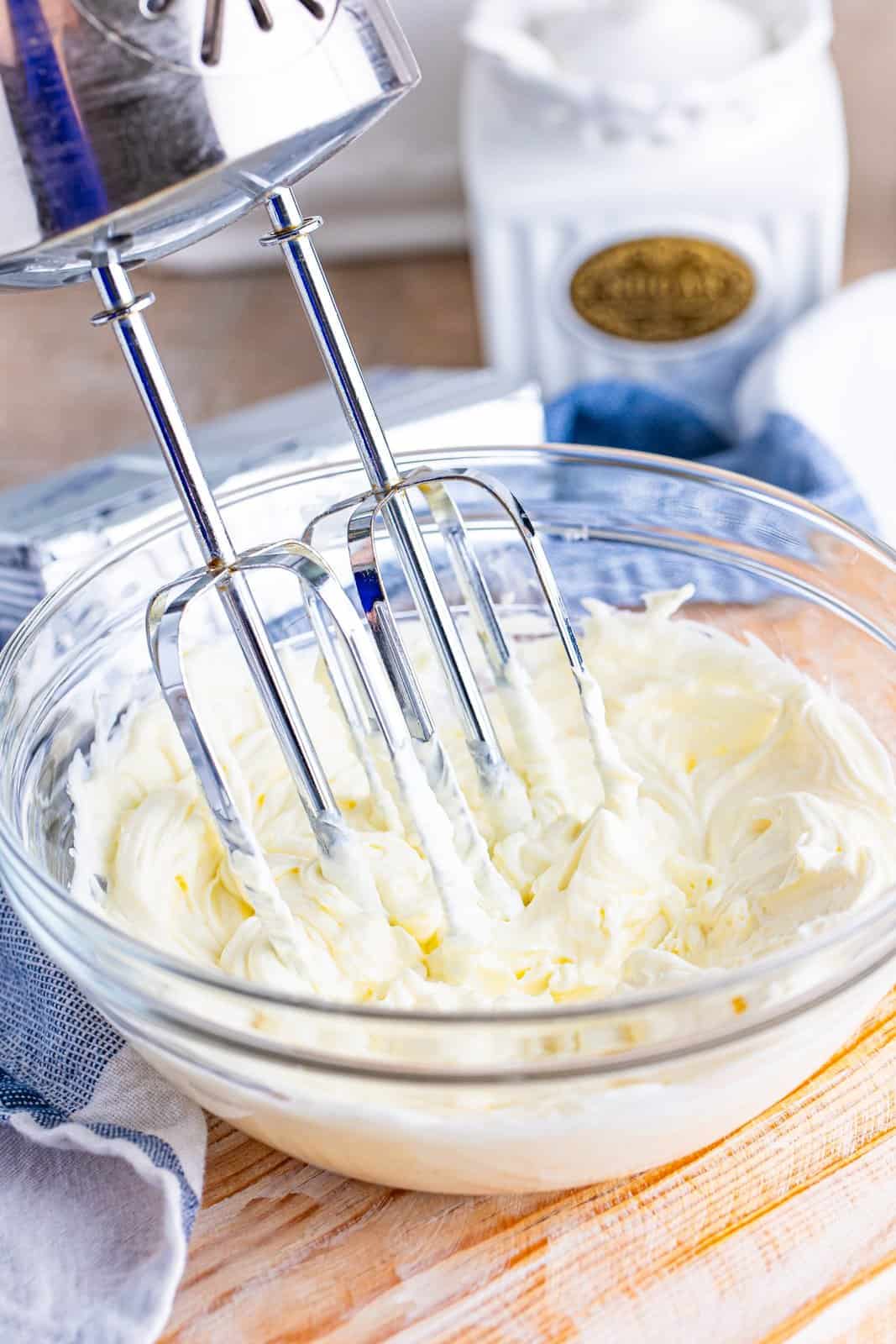
There are endless recipes out there that use softened cream cheese as an ingredient. Here are a few of my favorites:
– Easy and Creamy Cheesecake
– Air Fryer Sausage and Cream Cheese Crescents
– Jalapeno Popper Dip
– Mini Cheeseballs
– Cream Cheese Sausage Stuffed Biscuits
– Strawberry Shortcake Cake
– Swiss Enchiladas
INGREDIENT NEEDED:
- 8 ounce block cream cheese
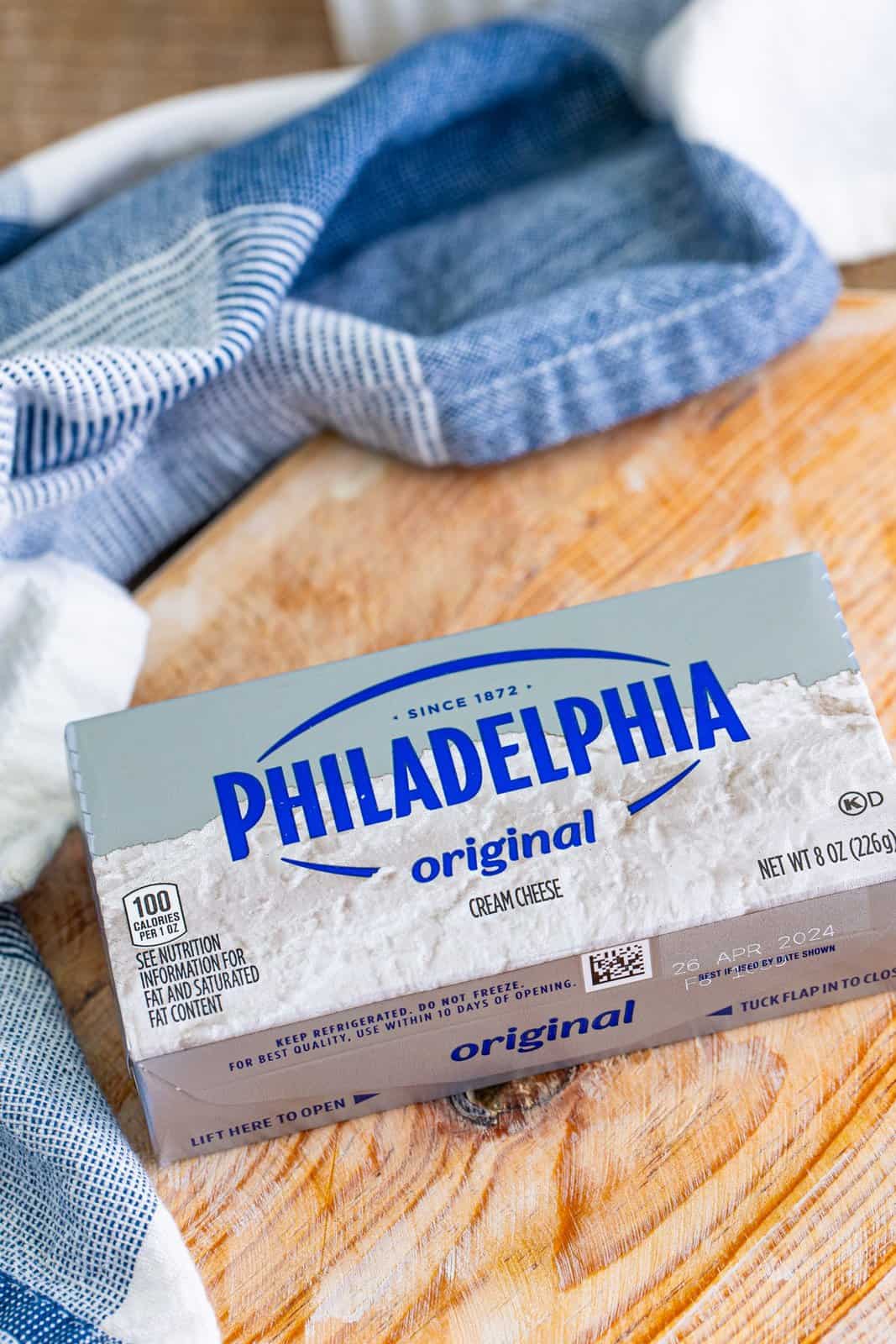
HOW TO SOFTEN CREAM CHEESE QUICKLY:
TRADITIONAL METHOD:
Total time: 1-3 hours
Let it sit at room temperature: Depending on the temperature in your home, this can take anywhere from 1-3 hours.
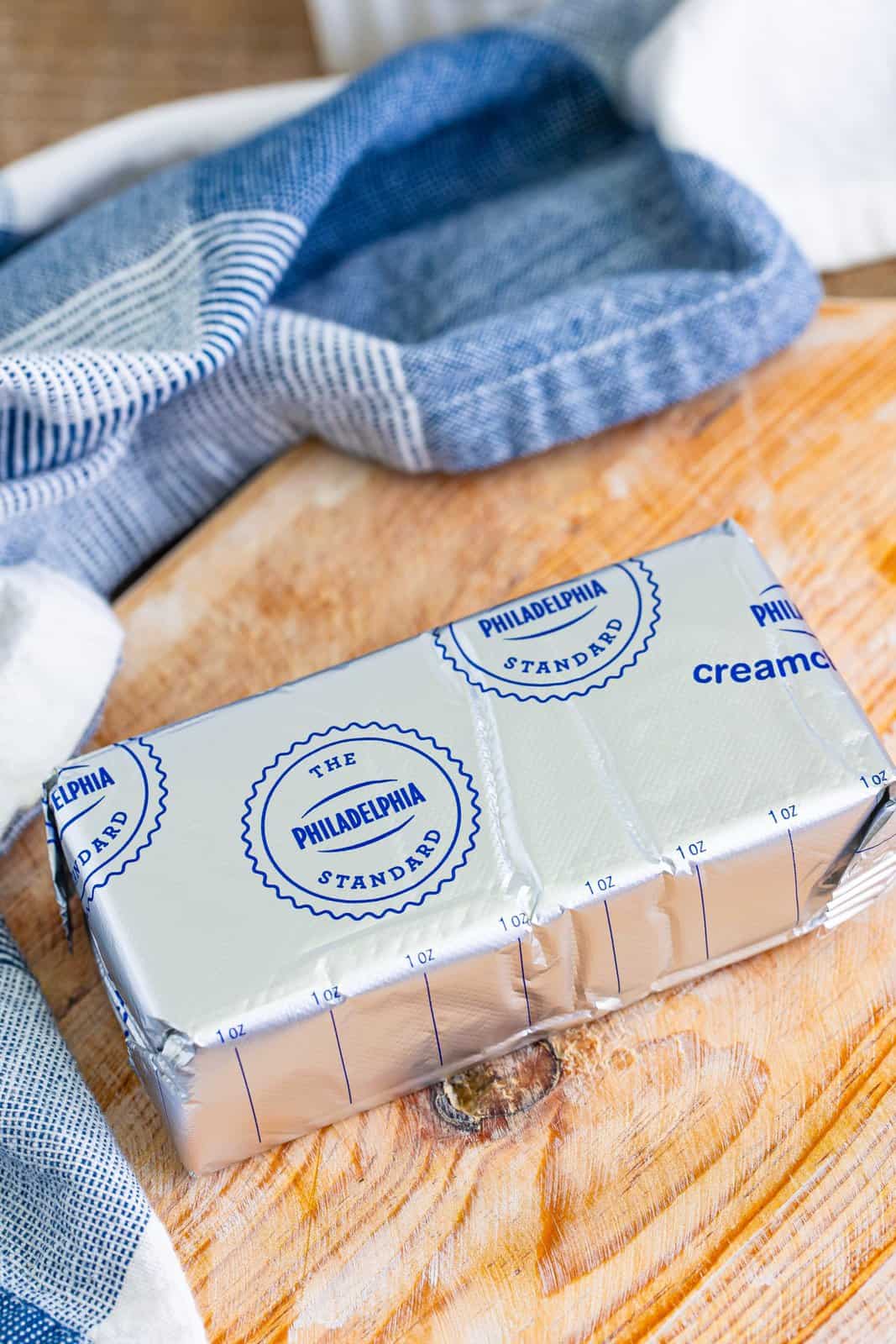
Cutting it into large cubes will help speed up the process of allowing it to sit out at room temperature.
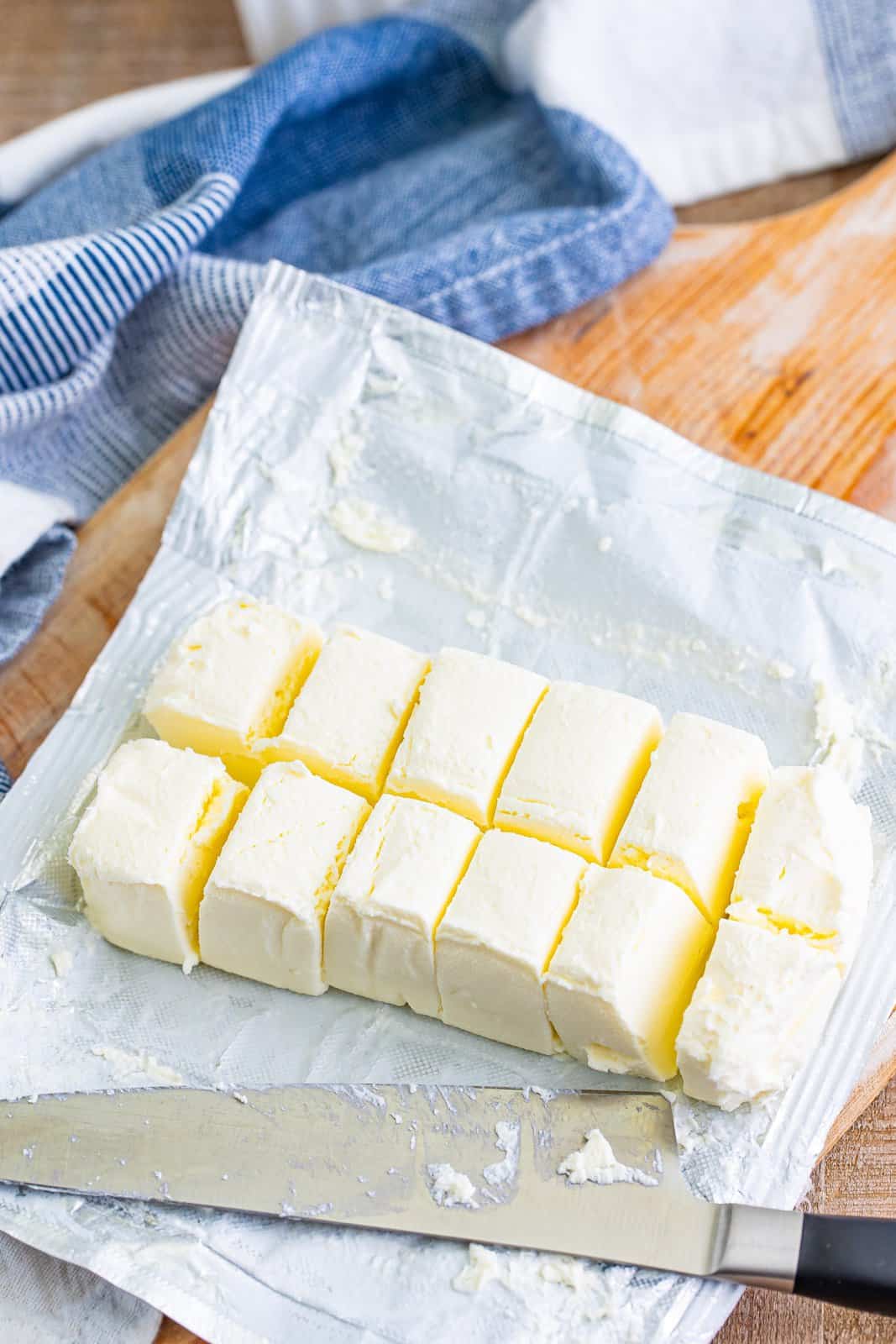
MICROWAVE METHOD:
Total time: 15 seconds (plus or minus)
Cut cream cheese into cubes then place into a microwave-safe bowl. Microwave in 15-second intervals until softened. Check after each interval, cream cheese can begin to melt very quickly.

WATER BATH METHOD:
Total time: about 15 minutes (give or take)
While the cream cheese is still in foil, place it into a large bowl. Cover with very warm water and allow it to sit until softened. This is going to be your best bet to get the cream cheese softened to the correct level of softness.
Note: make sure to check the seams of the foil to make sure it is tightly sealed. If it isn’t, the cream cheese may already be compromised and you may not want to use it. If you open up the packaging and there is water in with the cream cheese after you have thawed it in the water, this shows the packaging was defective.
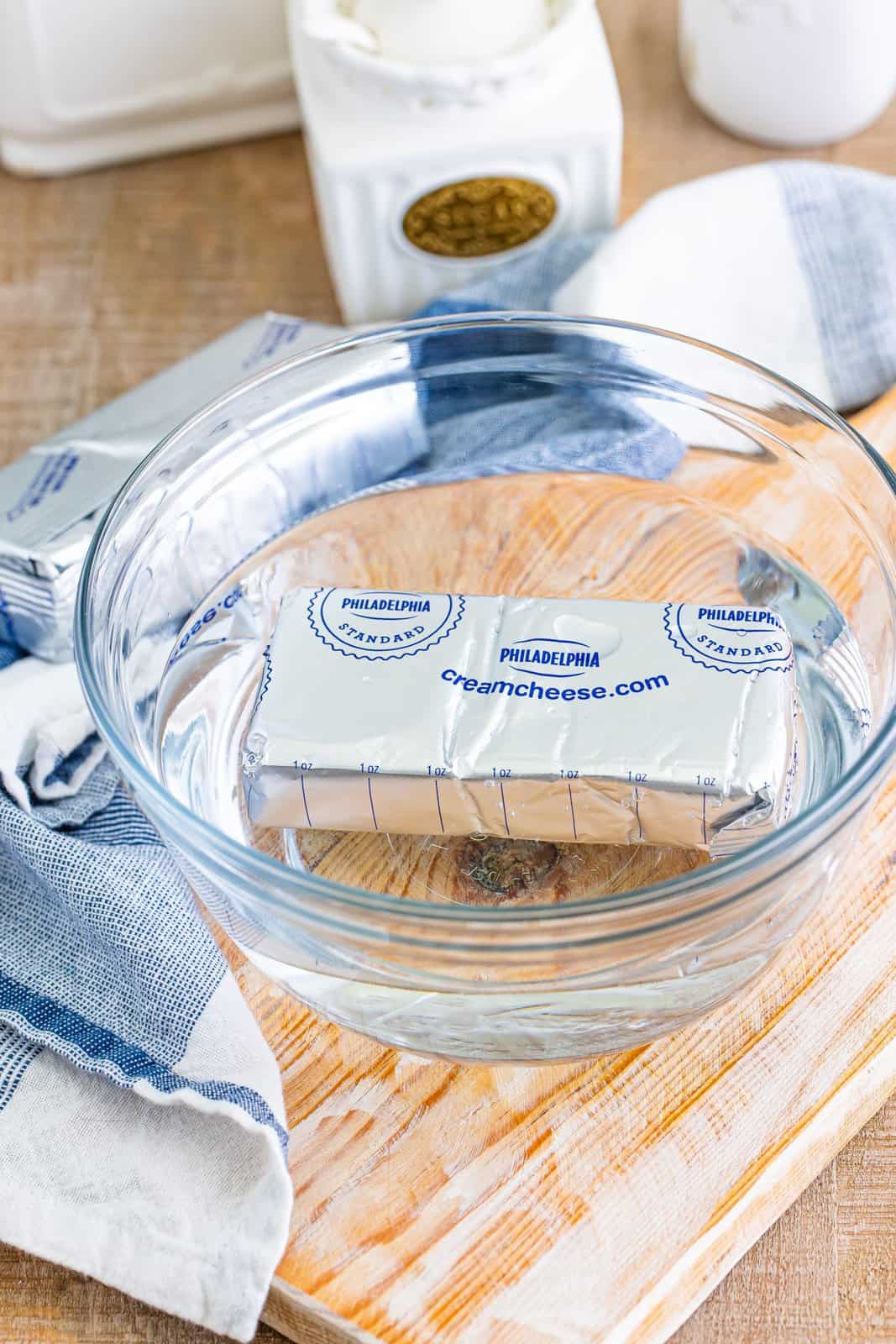
WANT MORE TIPS LIKE THIS ONE?

How to Soften Cream Cheese Fast
Ingredients
- 1 (8 ounce) block cream cheese
Instructions
WATER BATH: BEST FAST METHOD
- While the cream cheese is still in foil, place it into a large bowl. Cover with very warm water and allow it to sit until softened.
- Note: make sure to check the seams of the foil to make sure it is tightly sealed. If it isn't, the cream cheese may already be compromised and you may not want to use it. If you open up the packaging and there is water in with the cream cheese after you have thawed it in the water, this shows the packaging was defective.
TRADITIONAL METHOD:
- Let it sit at room temperature: Depending on the temperature in your home, this can take anywhere from 1-3 hours.
MICROWAVE METHOD:
- This is only recommended as a last resort. You can soften cream cheese in the microwave, but you have to be extremely careful while doing so.
- Remove the wrapping. Cut cream cheese into cubes then place into a microwave-safe bowl.
- Microwave in 15-second intervals until softened. Check after each interval, cream cheese can begin to melt very quickly.
Notes
- Please refer to my FAQ’s (Frequently Asked Questions) for the answers to the most common questions.
Nutrition
Nutritional Disclaimer
“The Country Cook” is not a dietician or nutritionist, and any nutritional information shared is an estimate. If calorie count and other nutritional values are important to you, we recommend running the ingredients through whichever online nutritional calculator you prefer. Calories and other nutritional values can vary quite a bit depending on which brands were used.




Great ideas! Could the cream cheese be put in a plastic bag before going in the water bath?
What would be the reasoning? If the package has any leaks, as I stated above, it may already be contaminated. The cream cheese packaging should be watertight.
Brilliant! Thank you!
A water bath is definitely my favorite way of softening cream cheese.